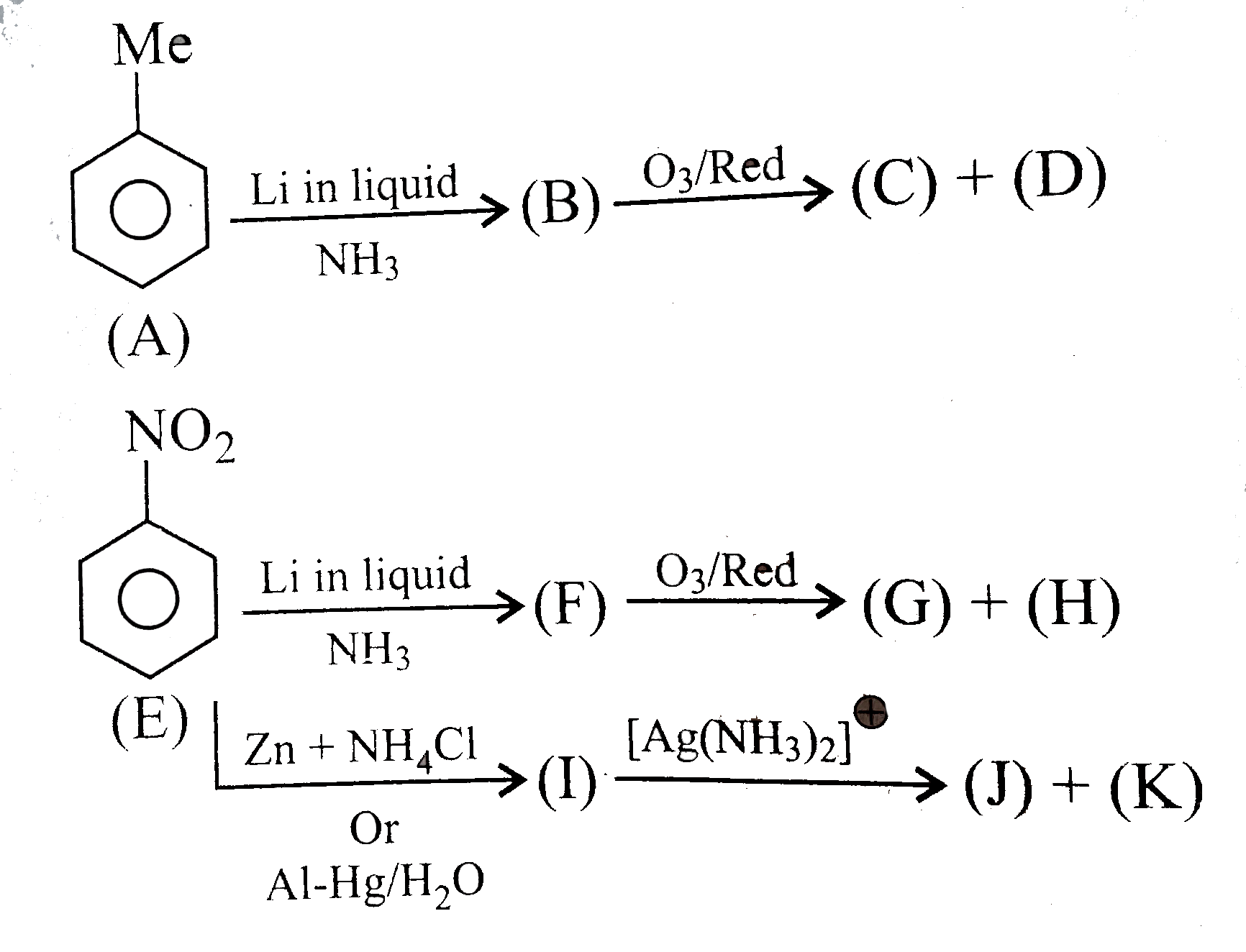
The compounds (I) and (J) are respectively:




The correct Answer is:d
RX in (I) with o−CN gives R−C≡N, while RX in (II) with CNo− gives R−⊕N≡o−C
(For explaination see solved Example 11.10)

Reactions are:

Topper's Solved these Questions
- AROMATIC COMPOUNDS AND ALKYL AND ARYL HALIDES BOOK - CENGAGE CHEMISTRY ENGLISHCHAPTER - AROMATIC COMPOUNDS AND ALKYL AND ARYL HALIDES EXERCISE - Exercises Linked Compreshension Type
11 Videos
- AROMATIC COMPOUNDS AND ALKYL AND ARYL HALIDES BOOK - CENGAGE CHEMISTRY ENGLISHCHAPTER - AROMATIC COMPOUNDS AND ALKYL AND ARYL HALIDES EXERCISE - Exercises Multiple Correct
32 Videos
- AROMATIC COMPOUNDS AND ALKYL AND ARYL HALIDES BOOK - CENGAGE CHEMISTRY ENGLISHCHAPTER - AROMATIC COMPOUNDS AND ALKYL AND ARYL HALIDES EXERCISE - Exercises Concept Application
4 Videos
- APPENDIX INORGANIC VOLUME 2BOOK - CENGAGE CHEMISTRY ENGLISHCHAPTER - APPENDIX INORGANIC VOLUME 2EXERCISE - Short Answer Type
179 Videos
- BIOMOLECULESBOOK - CENGAGE CHEMISTRY ENGLISHCHAPTER - BIOMOLECULESEXERCISE - Exercises Archives (Analytical And Descriptive)
8 Videos
Similar Questions

The compounds (J) is:
View Solution
The compound (J) and (K), respectively, are:
View SolutionA tertiary alcohol (H) upon acid-catalysed dehydration gives a product (I). Ozonolysis of (I) leads to compounds (J) and (K). Compound (J) upon reaction with KOH gives benzyl alcohol and a compound (L), whereas (K) on reaction with KOH gives only (M).

The structures of compounds (J), (K), and (L), respectively, are:
View SolutionA tertiary alcohol (H) upon acid-catalysed dehydration gives a product (I). Ozonolysis of (I) leads to compounds (J) and (K). Compound (J) upon reaction with KOH gives benzyl alcohol and a compound (L), whereas (K) on reaction with KOH gives only (M).

The structures of compounds (J), (K), and (L), respectively, are:
View SolutionIn the following sequence, product I, ,J and L are formed. K represents a reagent.

The structure of compound J and K respectively are
View SolutionIn the following reaction sequence, products I, J, and L are formed. K represents a reagent.

The structures of product I is :

The structures of compounds J and K, respectively, are :

The structure of product L is :

View SolutionIn the following reaction sequence, products I, J, and L are formed. K represents a reagent.

The structures of product I is :

The structures of compounds J and K, respectively, are :

The structure of product L is :

View SolutionIn the following reaction sequence, products I, J, and L are formed. K represents a reagent.

The structures of product I is :

The structures of compounds J and K, respectively, are :

The structure of product L is :

View SolutionIn the following reaction sequence, products I, J, and L are formed. K represents a reagent.

The structures of product I is :

The structures of compounds J and K, respectively, are :

The structure of product L is :

View SolutionGiven →A=2ˆi+pˆj+qˆk and →B=5ˆi+7ˆj+3ˆk. If →A∣∣→B, then the values of p and q are, respectively,
View Solution
